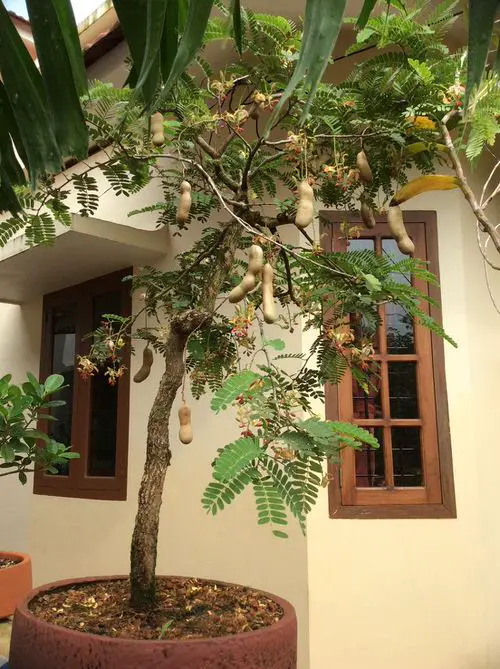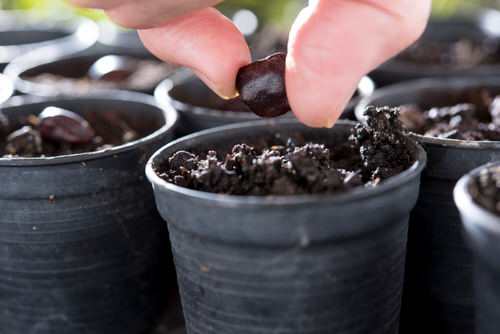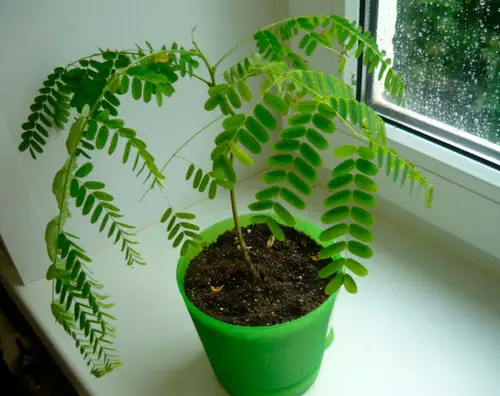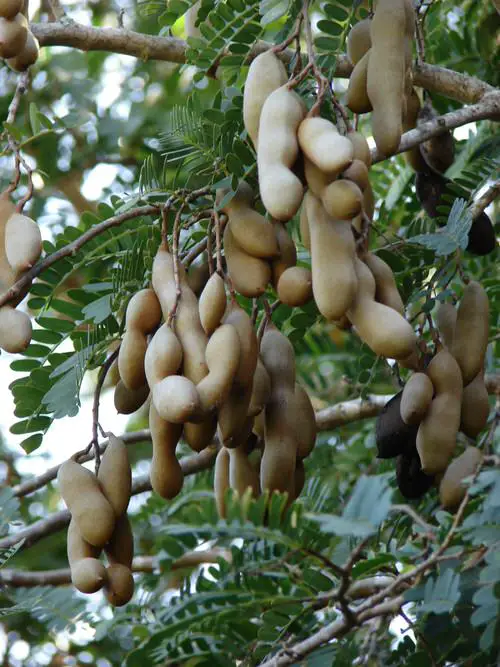Learn everything about Growing Tamarind in Pots and enjoy its fresh and tangy fruits right at your home! We have all the details for you!

Follow our guide to learn everything about Growing Tamarind in Pots to enjoy its sour-sweet fruit, or add an appeal by keeping it as an ornamental bonsai.
USDA Zone: 9-11
Difficulty: Easy
Common Names: Tamarindus indica, tamarin, tamarinier, tamarindo, tamarindier, tamarinde, asam jawa, sampalok, tamarinier des Indes, imli, chinch, ambli, ma-kharm.
Check out some fantastic tips on growing tamarind here
Propagating Tamarind

From Seeds
Summer is the best time to grow tamarind from seeds. Rinse the seeds in water and sow them in a well-draining growing medium. Water well, and keep the pot where it gets bright and indirect light. The seeds will germinate in 2-4 weeks.
Do bear the fact in mind that growing tamarind from seed is a long process, and the plant will fruit after 6-8 years.
From Cuttings
Take a 6-8 inches long cutting from a healthy branch. Dip the end in a rooting hormone and plant it in a pot filled with a quality potting mix. Water well and keep the pot at a location where it gets bright and indirect light. The cutting will root in 4-8 weeks.
A Tip: For faster fruits, getting a well-grafted plant from a nursery is always a good idea.
Learn how to grow baby corns in pots here
Best Pot Size for Growing Tamarind
You can start the plant in an 8-12 inches pot and then re-pot it into a bigger one as it grows. Do make sure that the container has a drainage hole at the bottom.
Best Tamarind Varieties to Grow in Pots
While growing tamarind in pots, make sure you go for smaller and quick-to-grow varieties. Manila, Spanish, Velvet, PKM 1, Urigam, Hasanur, Tumkur Prathisthan, DTS 1, Yogeshwari, and Australian tamarind are the best ones to grow in pots.
Here’s all you need to know about growing apples in pots
Requirements for Growing Tamarind in Pots

Position
Tamarind hails from the hot African continent, and it is best to imitate the native conditions for the plant. Keep the pot at a spot that gets direct sun all day. The more light it gets, the better it will be for its growth.
Soil
Tamarinds love well-draining, slightly acidic, sandy soil though they can grow on various kinds of soils ranging from coarse to clay.
For better results, you can use perlite or sandy soil mix and add 30-40 percent organic compost. If you live in a drier or tropical climate, you may add mulch such as coco peat, wood chips, or dead leaves to the soil. It would help in keeping the soil temperature cooler.
Watering
If your tamarind tree is still young, you must water the plant quite often and remember to keep the soil evenly moist. Once established, water only when the topsoil feels slightly dry to touch.
Temperature
The tree does best in temperatures between 60-113 F or 15-45 C. Keep the plant safe from the dangers of frost and bring it indoors if the temperature drops too much in your area.
Tamarind Care
Fertilizer
The tree does not need much feeding, and it would be good to feed a younger plant once every 4-5 weeks using a 6-6-3 NPK liquid fertilizer diluted to half its strength. Continue to fertilize the plant once a month until it achieves good growth. Avoid feeding it in winters.
Once the plant is established, you can feed it occasionally using an 8-3-9 blend to give it a boost in growth. You can also use a balanced, water-soluble fertilizer as a foliar spray.
Pruning
Snip away the damaged, dead, or diseased branches from time to time. When growing the tree in a pot, it is good to keep the top growth under check as it tends to be top-heavy. While trimming the top, ensure you do it in spring or early summer.
If you want to give it a specific shape while growing in pots, use the clip and grow
method. May and August is the right time to train young branches to a specific shape or direction of your liking.
Winter care
When the outside temperature falls below 45 F (8 C), bring the plant indoors and keep it in a warm spot. Keep it near a south-facing window where it gets a minimum of 4-5 hours of sunlight and warmth. Make sure the leaves are not touching the windowpane and away from the A/C vent.
Pests & Diseases
Be careful of caterpillars, scales, and borers. You can keep them away by using insecticidal soap. To keep most of the potential diseases at bay, ensure that the plant gets plenty of sunlight and avoid overwatering.
Also, keep the pot in an airy spot where it gets good air circulation.
Check out the best nuts you can grow in pots here
Harvesting Tamarind

The tree will start to bear fruits in 4-5 years after planting, and gets ready to harvest from winter to summer. Once the pods get a crisp brown shade, you can either pluck out a few, taste, and harvest or let them ripen more on the tree. The pods will remain on the tree, losing up to 60-80% of their moisture content.
If you want to make fresh jellies and jam, pick the pods when they are tender and deep brown in color. Gently twist and pull them away from the stalk, ensuring you are not harming the plant.
You can also gently shake the main branch of the tree to make the ripest pods fall.
Tamarind Uses
Tamarind tastes best when consumed raw. You can also use it to make juices, sauces, jams, beverages, and syrups. Its pulp is a popular ingredient in many South Asian cuisines and curry recipes.


